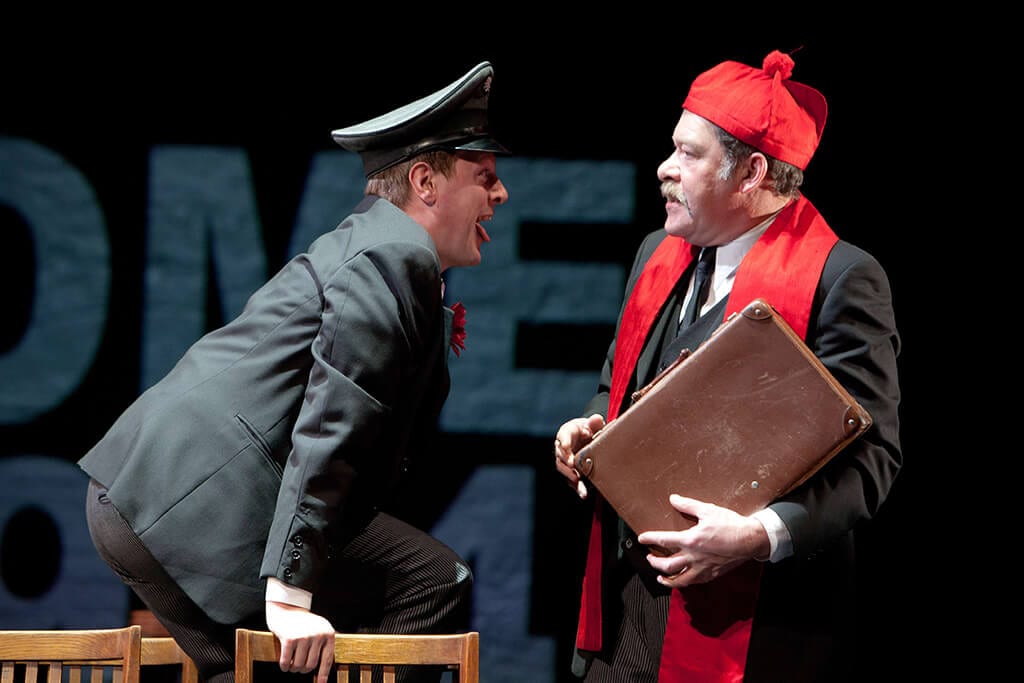Never assume your morality to be above anyone else’s: Travels with My Aunt invites its audience to sit back and enjoy the slow unravelling of its protagonist’s principles. Henry Pulling leads a boringly conventional life as a retired bank manager when he meets his long-estranged Aunt Augusta at his mother’s funeral. Abandoning his quiet existence in Southwood and his dahlia gardening, Henry embarks on an adventure that will take him from his little corner of England to Turkey, France, and South America.
Graham Greene’s satire takes the post-World War II era as its target. Years later, does it still hit the mark? The stakes are doubly high for Philip Breen’s restaging of the classic comedy. At the time of its first production in 1989, Travels with My Aunt was an immense success, and went on to tour extensively. The script was adapted by Giles Havergal, the former artistic director of the Citizens, who made the theatre the Scottish institution it is today.
The play rests on four performers. Between them, they have to give life to Henry Pulling and his Aunt, but also to a whole crowd of characters – humans, animals, and even a lamp – all spread over three continents and a timespan of more than twenty years. The script blends dialogue and narrative, passing from one to the other as the actors jump into new personas. The cast certainly rise to this challenge. Ian Redford plays bohemian, sexually confident Aunt Augusta. Tony Cownie lends his high-pitched voice to Toolie, a pregnant teenager met on the train and Miss Keele, a spinster and Henry’s lovelorn admirer, while Joshua Richards plays Wordsworth, Aunt Augusta’s African lover and drug dealer. As for Ewan Somers, he is probably the most comical figure, acting as a versatile prop-man – dog, plane, train, you name it. All share the part of Henry, whose mobile incarnation onstage is a good fit for his changing morals. The Henries perform in a minimal set – some chairs, black mannequins, a gramophone, and a frame. Screens on all sides of the stage provide changes of atmosphere, and location names are written in capital white letters at the back. The set proves as versatile as Henry himself.
By Philip Breen’s own admission, the novel is indeed ‘of its time’. In addition to his eccentric relative, Henry becomes acquainted with a mixed bag of criminals, secret agents and other such types, including a CIA agent whose main occupation appears to consist in keeping track of his time spent urinating, and a former Nazi collaborator hiding in South America. Wordsworth, Aunt Augusta’s black lover, speaks with an accent that was probably already offensive in 1969. The whole point is that it’s never tasteful, but while the script conveys Greene’s elegant style to perfection, it is hard to adhere to the play’s satire of conventions and eccentricity when its second half, especially, relies so much on old stereotypes.



